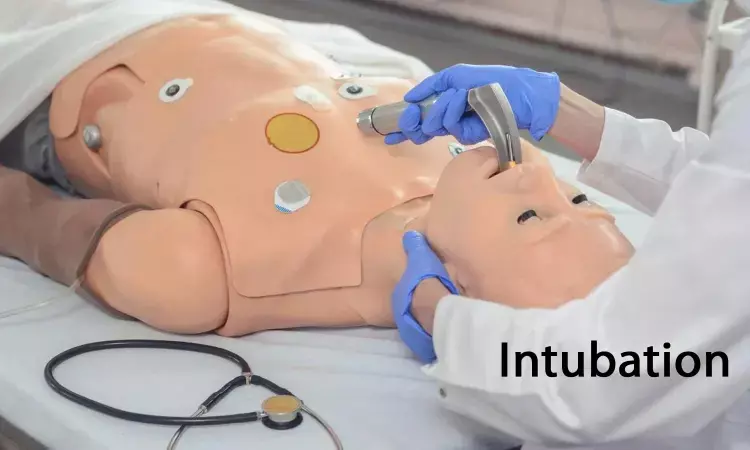- Home
- Medical news & Guidelines
- Anesthesiology
- Cardiology and CTVS
- Critical Care
- Dentistry
- Dermatology
- Diabetes and Endocrinology
- ENT
- Gastroenterology
- Medicine
- Nephrology
- Neurology
- Obstretics-Gynaecology
- Oncology
- Ophthalmology
- Orthopaedics
- Pediatrics-Neonatology
- Psychiatry
- Pulmonology
- Radiology
- Surgery
- Urology
- Laboratory Medicine
- Diet
- Nursing
- Paramedical
- Physiotherapy
- Health news
- Fact Check
- Bone Health Fact Check
- Brain Health Fact Check
- Cancer Related Fact Check
- Child Care Fact Check
- Dental and oral health fact check
- Diabetes and metabolic health fact check
- Diet and Nutrition Fact Check
- Eye and ENT Care Fact Check
- Fitness fact check
- Gut health fact check
- Heart health fact check
- Kidney health fact check
- Medical education fact check
- Men's health fact check
- Respiratory fact check
- Skin and hair care fact check
- Vaccine and Immunization fact check
- Women's health fact check
- AYUSH
- State News
- Andaman and Nicobar Islands
- Andhra Pradesh
- Arunachal Pradesh
- Assam
- Bihar
- Chandigarh
- Chattisgarh
- Dadra and Nagar Haveli
- Daman and Diu
- Delhi
- Goa
- Gujarat
- Haryana
- Himachal Pradesh
- Jammu & Kashmir
- Jharkhand
- Karnataka
- Kerala
- Ladakh
- Lakshadweep
- Madhya Pradesh
- Maharashtra
- Manipur
- Meghalaya
- Mizoram
- Nagaland
- Odisha
- Puducherry
- Punjab
- Rajasthan
- Sikkim
- Tamil Nadu
- Telangana
- Tripura
- Uttar Pradesh
- Uttrakhand
- West Bengal
- Medical Education
- Industry
Airway ultrasound superior to traditional clinical parameters for predicting difficult laryngoscopy, suggests study

Assessment of the airway is crucial for managing airways effectively. Ultrasound has increasingly become a viable alternative for evaluating airways. Recent research paper aims to assess the accuracy of various clinical and ultrasonographic parameters in predicting difficult laryngoscopy in the emergency department. The primary objective is to determine the accuracy of ultrasonography parameters compared to Cormack-Lehane grading in predicting difficult laryngoscopy in adults. The secondary objective is to assess the accuracy of clinical parameters compared to Cormack-Lehane grading in predicting difficult laryngoscopy in adults.
Study Design and Procedure
The study will be a prospective cross-sectional study involving 62 adult patients over 18 years who come to the emergency department and require endotracheal intubation. An emergency medicine physician will perform an ultrasonographic examination of the upper airway, measuring the skin-to-epiglottis distance and tongue thickness using a GE Healthcare ultrasound. Clinical airway assessment will also be conducted using the LEMON criteria. A trained emergency medicine physician, unaware of the clinical and ultrasound airway parameters, will perform a laryngoscopy and record the Cormack-Lehane grading. The study is expected to provide insights into the comparative effectiveness of airway ultrasound versus conventional clinical parameters in predicting difficult laryngoscopy within an emergency department setting. Airway ultrasound has demonstrated significant potential due to its real-time imaging capabilities and ability to visualize anatomical structures that may not be readily accessible through clinical examination alone. Ultrasound parameters such as the distance from the skin to the epiglottis and the anterior neck soft tissue thickness at the level of the hyoid bone and vocal cords have been shown to be effective in predicting difficult laryngoscopy.
Hypothesis and Conclusion
The researchers hypothesize that airway ultrasound may offer superior predictive value compared to traditional clinical parameters. The integration of ultrasound into airway assessment protocols could revolutionize the approach to managing airways in the emergency department, ensuring that patients receive the best possible care even in the most challenging situations. The conclusion of the study will be drawn regarding the correlation between ultrasound parameters, Cormack-Lehane grading, and clinical parameters in predicting difficult laryngoscopy.
Key Points
1. The primary objective is to determine the accuracy of ultrasonography parameters compared to Cormack-Lehane grading in predicting difficult laryngoscopy in adults.
2. The secondary objective is to assess the accuracy of clinical parameters compared to Cormack-Lehane grading in predicting difficult laryngoscopy in adults.
3. The study is a prospective cross-sectional study involving 62 adult patients over 18 years who come to the emergency department and require endotracheal intubation.
4. An emergency medicine physician will perform an ultrasonographic examination of the upper airway, measuring the skin-to-epiglottis distance and tongue thickness, and a clinical airway assessment using the LEMON criteria.
5. The researchers hypothesize that airway ultrasound may offer superior predictive value compared to traditional clinical parameters in predicting difficult laryngoscopy.
6. The conclusion of the study will be drawn regarding the correlation between ultrasound parameters, Cormack-Lehane grading, and clinical parameters in predicting difficult laryngoscopy.
Reference -
Kadadi S, Gadkari C, Pundkar A (September 16, 2024) A Comparison of Airway Ultrasound and Clinical Parameters for Predicting Difficult Laryngoscopy in the Emergency Department: A Study Protocol. Cureus 16(9): e69543. DOI 10.7759/cureus.69543
MBBS, MD (Anaesthesiology), FNB (Cardiac Anaesthesiology)
Dr Monish Raut is a practicing Cardiac Anesthesiologist. He completed his MBBS at Government Medical College, Nagpur, and pursued his MD in Anesthesiology at BJ Medical College, Pune. Further specializing in Cardiac Anesthesiology, Dr Raut earned his FNB in Cardiac Anesthesiology from Sir Ganga Ram Hospital, Delhi.


